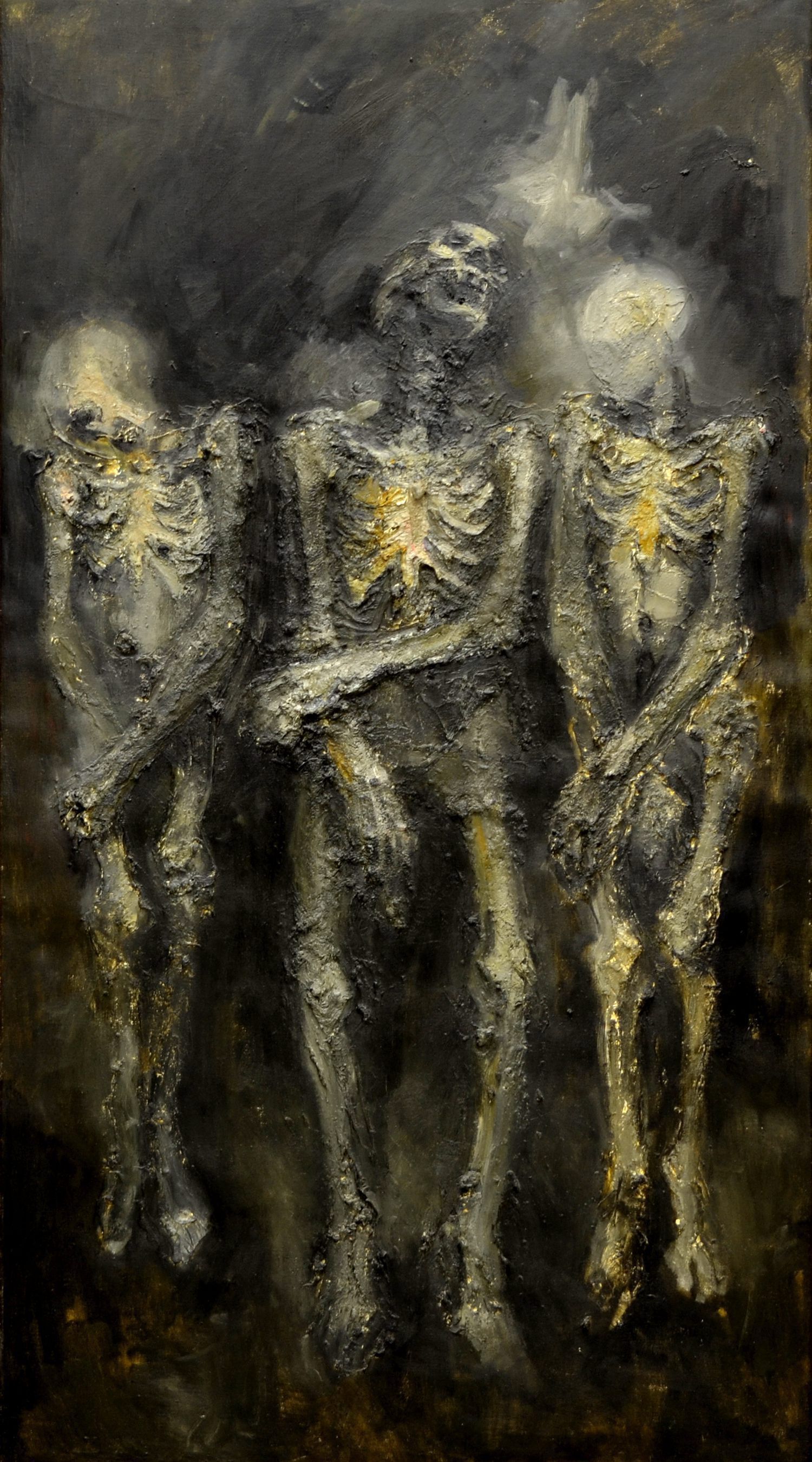Label
2022, Whose America?
In the summer of 1964, three young men were abducted and murdered for volunteering in Freedom Summer, a campaign to register Black voters in Mississippi. Rather than intimidating activists, the crime had the opposite effect. In the two years after the murders, one hundred thousand African Americans had registered to vote.
Inspired by the events, Navone created this painting of three skeletal remains. When asked about the painting, Navone said that he “really wanted to show people that although they had passed away, they were still in a sense alive and carrying on.” To achieve this, he painted the middle figure looking up to suggest a brighter future.
Text by Brittany Crocker and Aaron Woodbridge, Washburn studentsLabel
Label from 2014.Art for Social Change:
In 1964 as part of Freedom Summer Andrew Goodman and Michael Schwerner, two white men from the North, and James Chaney, a local black man, were among approximately 1000 volunteers in Mississippi attempting to register African Americans to vote. On June 21 the Ku Klux Klan murdered them. Their bodies were discovered on August 4 after a massive search that was widely covered in the national press.
Outraged by this event, Ed Navone, just beginning his forty-three year career teaching art at Washburn University, decided to memorialize the slain men. He painted them not as recently deceased corpses, but as skeletons. They appear to be standing because Navone wanted to imply that “they were still marching even in death.” The head of the central figure is upraised; “the idea,” said the artist, “is one of looking over or beyond death and imparting a certain dignity to what they did.”
